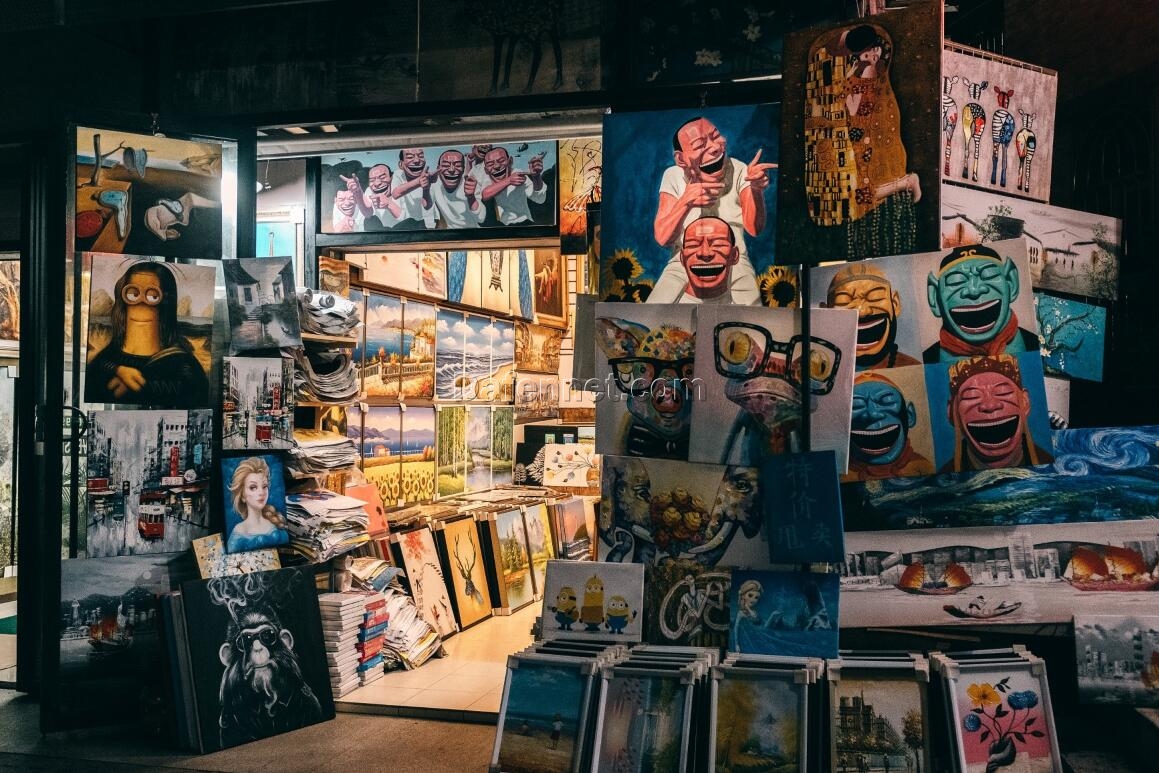Dafen oil painting Village
Brushstrokes of Change: The Evolution of Dafen Oil Painting Village
The first time I visited Dafen Village, I was a high school freshman art student, filled with curiosity about “China’s Number One Oil Painting Village”. Back then, Dafen’s streets were cluttered, with oil paintings piled up along the roadsides, and shops selling paintings lined up one after another. Children played noisily in the streets, occasionally disrupted by the whoosh of motorcycles and cars stirring up the breeze… Now, 12 years later, Dafen Village has transformed significantly.
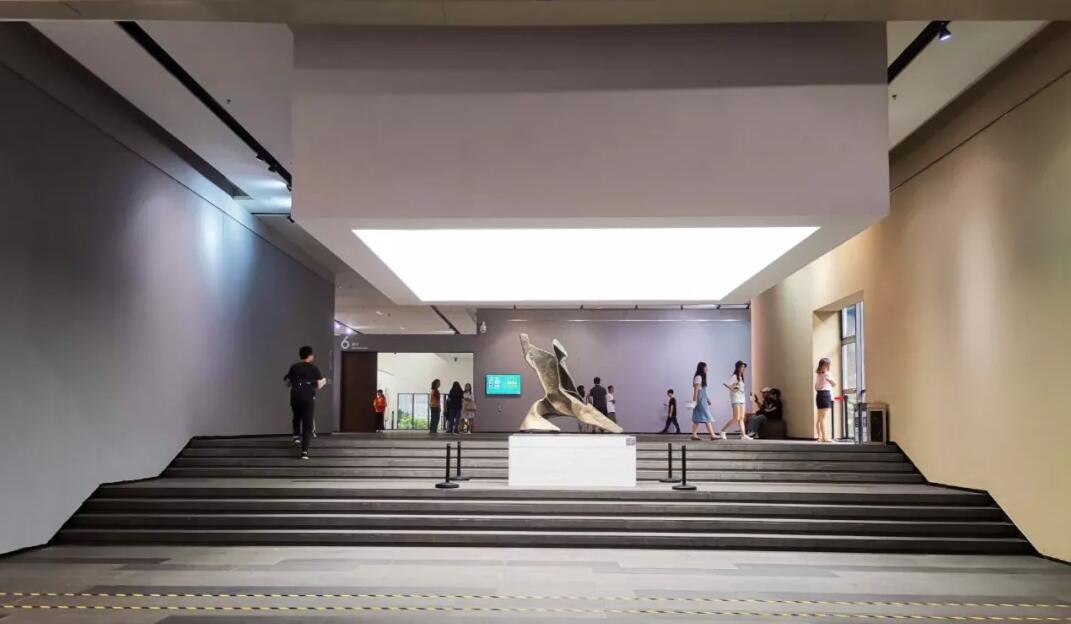
Dafen, a place all about “color”
Previously, the most abundant thing in Dafen wasn’t people but paintings and colors. Whether it was the paintings framed inside and outside shops or new works laid out along the sidewalks, even windows, walls, steps, and alleys were filled with spontaneous bursts of color. Now, all the colors are concentrated in the paintings inside and outside the shops, with hardly any seen elsewhere.
Each shop in the village has its own style, displaying a variety of oil paintings, from Van Gogh’s “Sunflowers”, “Starry Night”, to “Self-portraits” – almost every shop showcased a few. Now, painters increasingly create their own unique works in varying styles, from small paintings priced at tens to large canvases costing thousands, catering to every preference.
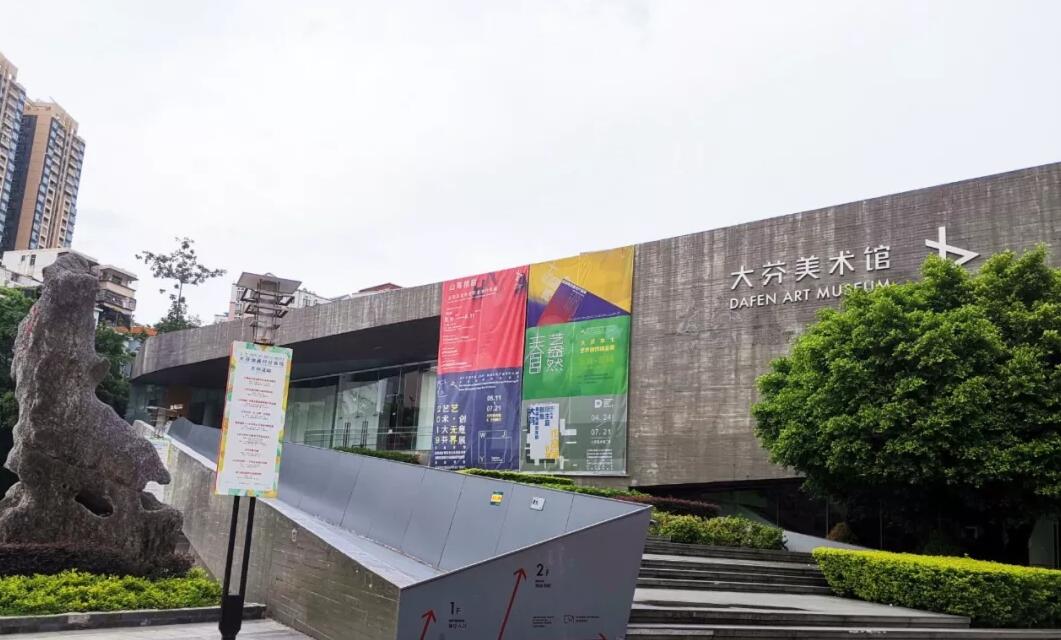
Many shops offer painting experiences for beginners, where completed works can be taken home. Children sit in these shops, diligently applying paint to canvases, their faces lit up with smiles. The village bustles with tourists drawn by fame, who pause to admire each painting and occasionally express their awe. But where are the creators of these paintings?
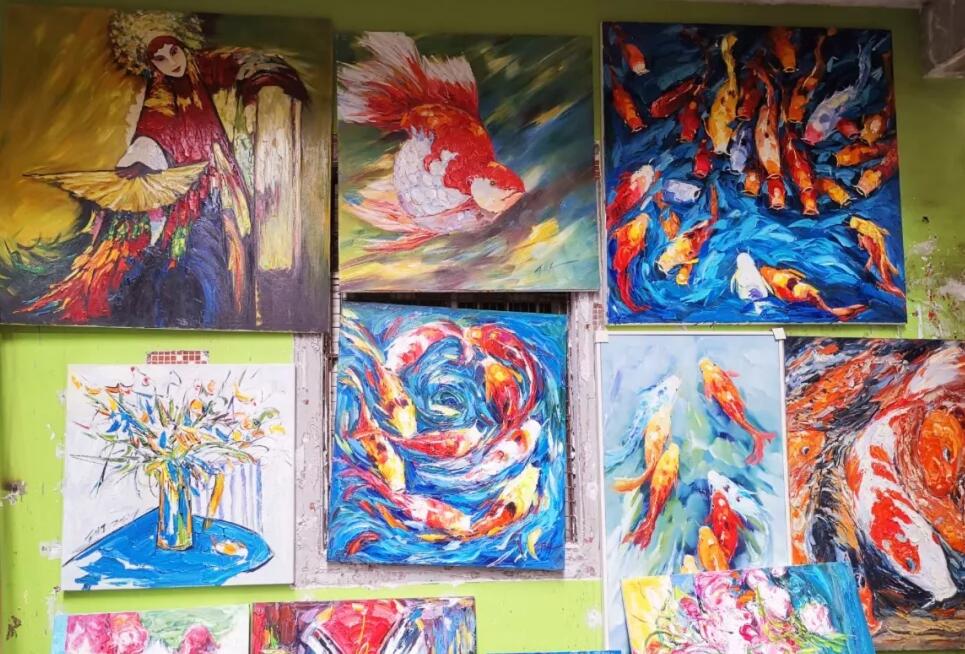
In Dafen, you encounter 10,000 “Chinese Van Goghs”
In the village’s quieter alleys, another scene unfolds. I’ve always believed Dafen’s painters are the most grounded, sitting in alleys, painting undisturbed as passersby are drawn to their serious dedication. This unique charm is something Dafen still preserves.
The painters here range widely in age, from young people in their twenties to middle-aged individuals in their forties and fifties, each deeply focused on their art, showing that art knows no national or age boundaries.
Previously, my art teacher advised us not to end up like Dafen’s painters who mostly replicated masterpieces without original thought, merely “paint craftsmen” rather than true “artists”. Dafen might have had this issue in the past, as depicted in the documentary “China’s Van Goghs”, where the protagonist Zhao Xiaoyong spent twenty years painting Van Gogh’s works without creating his own.
But now, with so many shops displaying distinct artworks, Dafen’s painters have likely realized the limitations of mere replication and have started creating their unique pieces, rightfully earning the title of “artists”.
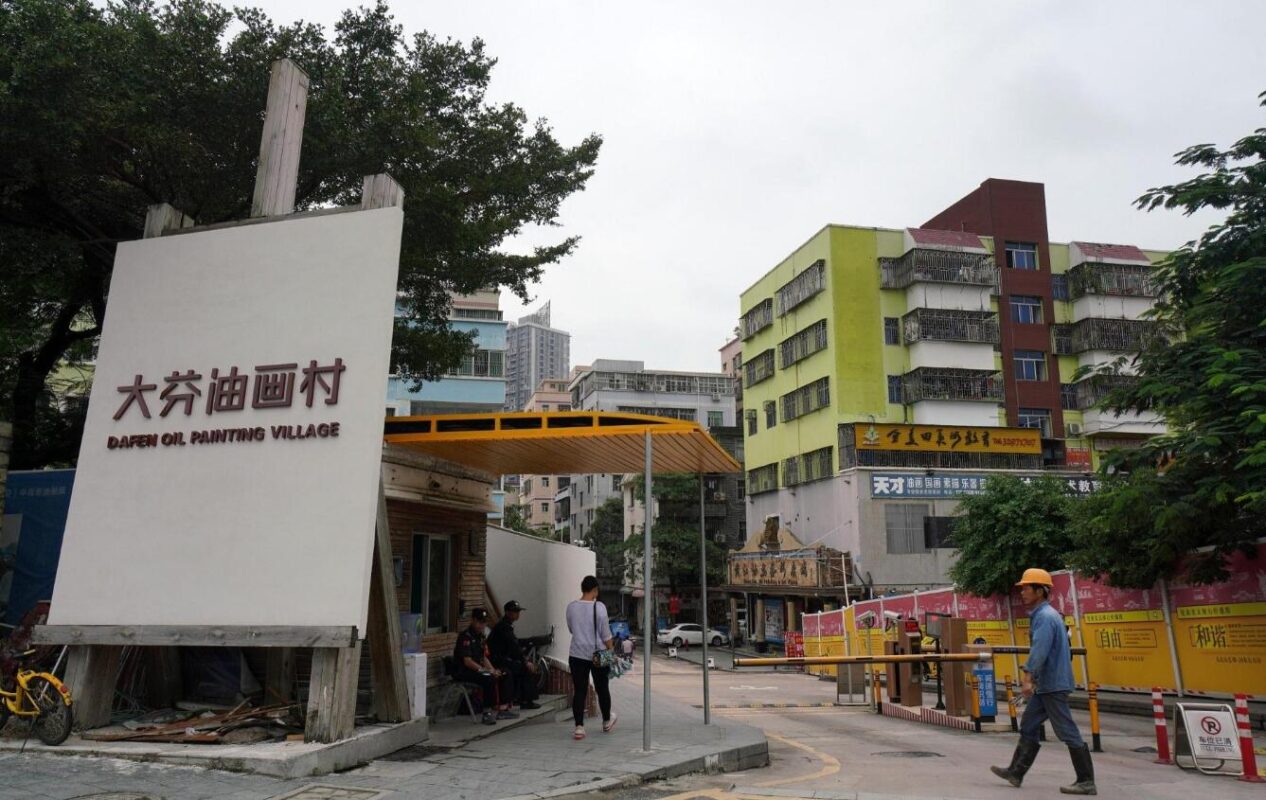
In Dafen Art Museum, visitors can freely explore a wide array of the village painters’ creations without an entry fee. The spacious, bright interior showcases diverse styles and emotions in the artwork, further highlighting the village’s creative transformation.
While today’s Dafen lacks some of the raw, vivid artistry of the past, I still recommend a visit to see the works of China’s “Van Goghs”, to understand their art, their efforts, and their dreams, and to witness how they express their pursuit of art and their zest for life in a city like Shenzhen.

